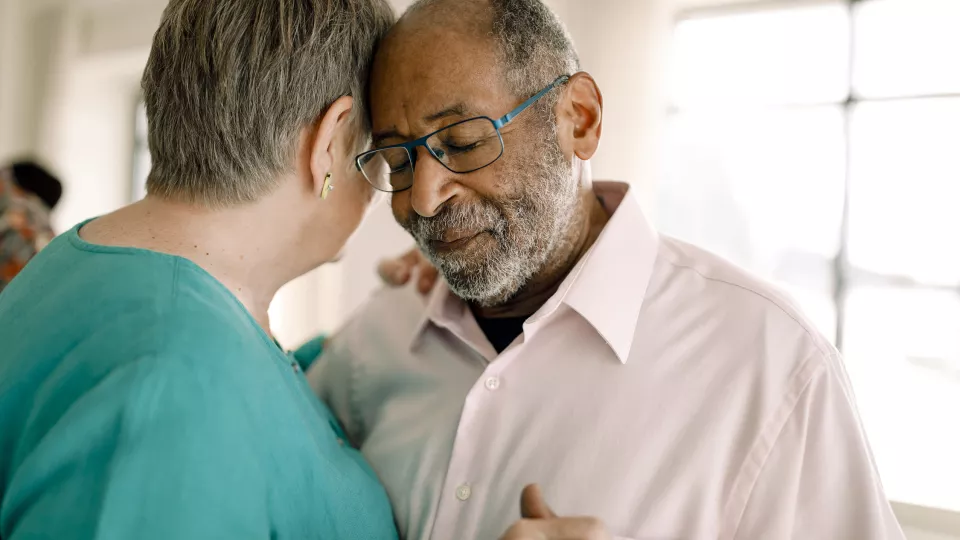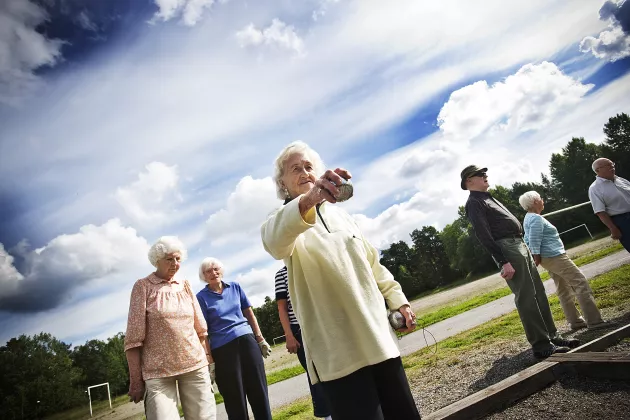6 ways to combat ageism

Despite a widespread and outdated view of older people, and an abundance of stereotypes, awareness of what is known as ageism is limited. A new short guide gives tips for how you can use your communication to counter discrimination against older people.
The World Health Organisation (WHO) and the United Nations (UN) have been highlighting ageism for almost 20 years. Put simply, ageism can be described as a prejudice towards people because of their chronological age. It is usually older people who are subjected to ageism.
“Both in the media and in popular culture, you will hear words and phrases loaded with ageism on a daily basis. It might be obvious things such as Miss Li’s latest single being called Ålderdomshemmet (Old people’s home). In Sweden, that word disappeared as a designation more than 30 years ago and is never used by anyone with current knowledge of health care and social services and various forms of accommodation for older people,” says Susanne Iwarsson, professor of gerontology at Lund University.
Concrete tips for journalists and communications officers
To assist in combatting ageism, researchers at Lund University have produced concrete advice on how those working in communications, such as correspondents, communications officers, journalists, photographers, researchers and editors, can go about things to avoid discriminatory descriptions of older people.
“The way older people are presented in the media affects attitudes and behaviour more than we think. We want this quick guide to increase awareness of the power of language and images,” says Susanne Iwarsson.
In the guide, there is concrete advice about alternative ways of expression. The guide is aimed at all roles working with text and images.
“Despite the fact that we actually become more dissimilar as we age, older people are often presented as fragile, vulnerable or lonely. Other stereotypes portray older people as inquisitive, creative and active,” says Susanne Iwarsson.
She says there is a need for language and images appropriate to the diversity that characterises the ageing population, since our era is largely characterised by rapid communication in many different forms.
“If we can increase awareness of the way in which we describe people of different ages, we will have come a little way towards combatting ageism,” says Susanne Iwarsson.
- Avoid generalisations. People being the same age does not mean they are a homogenous group.
- Avoid describing older people and ageing as problems. Constant warnings about how the increasing numbers of older people will entail enormous problems for society, through needing extensive support and threatening public finances conjure up images of a negative and uncontrollable situation.
- Avoid disparaging euphemisms. Use objective language that does not merely focus on age, impairment or other stereotypes that might be linked with various age groups.
- Use neutral language. An adverb such as “still” is not neutral, since it might imply something is remarkable at a certain age.
- Avoid referring to “the others.” It creates a divide between age groups and a boundary between our current and future selves, which reduces the sense that both younger and older people deserve to be fully included in society.
- Choose pictures carefully. It is common to see images that depict older people as sad, lonely and weak. Even if this may reflect a part of reality, such images certainly do not represent all older people’s experience. Similarly, images showing young people as happy, healthy technophiles focused only on social media do not reflect the diversity that exists among younger people.
Ageism
The concept of ageism was introduced to English in the late 1960s by American psychiatrist and gerontologist Robert Butler. According to the WHO, ageism refers to prejudice, discrimination and harmful structures directed at people based on their age. Accordingly, it can be explained as age-based discrimination.
It is usually older people who are subjected to ageism, but ageism may also affect young people – it is then called “reverse ageism.”
The language guide was developed by CASE (Centre for Ageing and Supportive Environments) at Lund University. The World Health Organisation’s 2021 guide – part of a global campaign to combat ageism – was used for inspiration.
Contact information
Susanne Iwarsson
Professor
Phone: +46 46 222 19 40
Mobile: +46 703 17 31 11
susanne [dot] iwarsson [at] med [dot] lu [dot] se (susanne[dot]iwarsson[at]med[dot]lu[dot]se)
Profile area at LU
Proactive ageing is one of five profile areas at Lund University.
By studying different stages of ageing and focusing on people in midlife, researchers are developing proactive approaches for health care, social services and community planning.
This will contribute to improved health and quality of life for future generations of older people.
Other research news
-
2 Jan 2026
Researchers create cells that help the brain keep its cool
Researchers at Lund University in Sweden have created a method that makes it possible to transform the brain’s support cells into parvalbumin-positive cells. These cells act as the... -
29 Dec 2025
Machine learning drives drug repurposing for neuroblastoma
Using machine learning and a large volume of data on genes and existing drugs, researchers at Lund University in Sweden have identified a combination of statins and phenothiazines ... -
29 Dec 2025
Historically high food prices made us eat less fruit and vegetables
During 2022-2023, food prices in Sweden rose by 25 per cent. But it wasn't just household budgets that were hit hard by the price increases.


